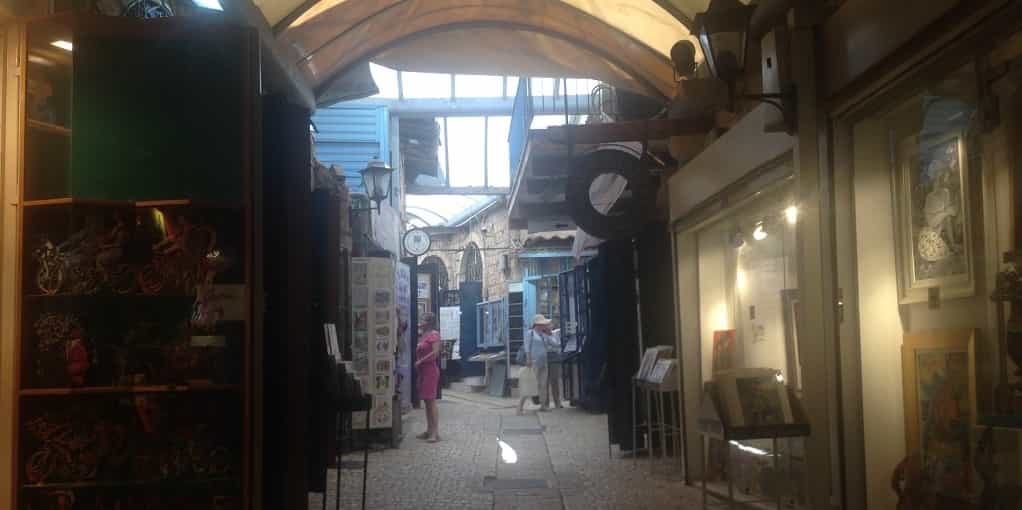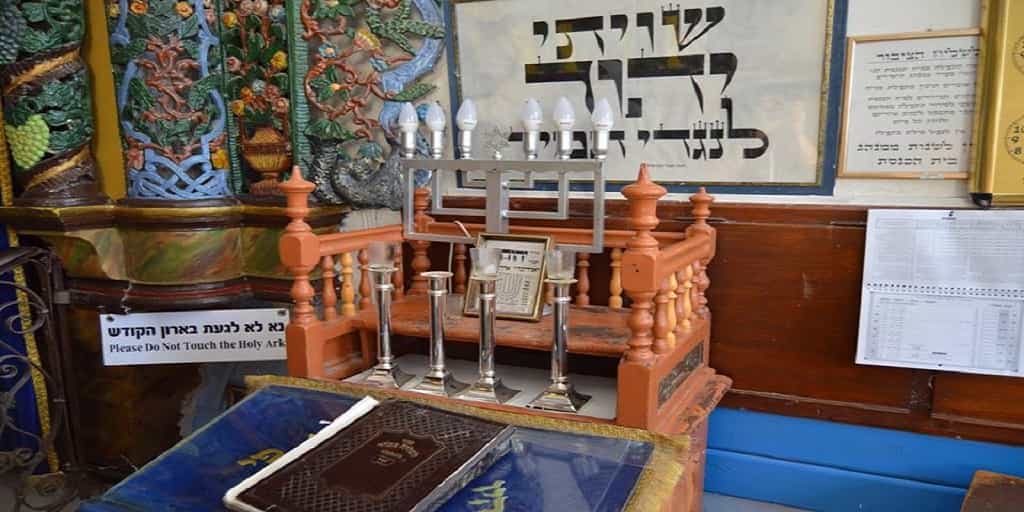There are four holy cities in Judaism: Jerusalem, Hebron, Tiberius, and Tzfat. Each city is connected to an element of nature. Tzfat is located in northern Israel, and an incredibly spiritual city. It is known as a Kabbalistic center and home to an international Klezmer festival every summer. It is the burial spot of Adam’s child Shem. And it is connected to the element of air. So, what is Tzfat all about? Why do we feel that spirituality so quickly when we enter the city of Tzfat?

Kabbalah in Tzfat
Tzfat became a center for Kabbalah, or Jewish mysticism, in the 16th century. The community had a strong population from the Iberian Peninsula after the Spanish and Portuguese Inquisition in the 15th century. The Spanish community will contribute a lot to Kabbalah.
But what is Kabbalah really? It is a three-fold practice with focus on the theoretical, the spiritual, and the meditative. A lot of the ideas of Kabbalah are developed in Tzfat because of those Sephardic Jews coming from Spain, Portugal, and North Africa. The ultimate goal is to bring G-d down to Earth and to bring about the Messiah.

Who are they? They are people like HaAri, Joseph Caro, and Rabbi Abuhav. And it is here that they publish works that have HUGE effects on Judaism. Joseph Caro writes the Shulhan Aruch, a work that spells out the bottom lines of Jewish law. Rabbi Abuhav wrote a book about Rabbinic lore. HaAri wrote a prayer that Jews say until today- Lecha Dodi! The idea of Tikkun Olam, or repairing the world, is another idea still practiced today, but developed in Tzfat.
Songs, prayer, meditative practices, all still practiced in Kabbalah today were developed in the holy city of Tzfat. Today, Kabbalah is still being practiced and developed in the city with Kabbalistic centers and yeshivas throughout the city.
Why is air connected to the city of Tzfat?
Each of the holy cities of Judaism is connected to an element of nature; Tzfat is connected to air, but why? You feel the clean air, you can take a deep, big breath of air of Tzfat. That clean, crisp air helps with the mystical, kabbalistic feel of the city. It is so easy to sit down on a bench and natural begin meditating because of the great air in Tzfat.
Furthermore, because Tzfat is on top of a mountain, it metaphorically is closer to the air. It’s higher up physically, so it is higher up in the air. So there is a physical aspect to it as well.
Finally, when people pray, when people meditate, when people engage in Kabbalah, I would say they are looking to be elevated spiritually. We often look at that elevation to be on a vertical axis—to raise up into the air. So even in spirituality, the city of Tzfat is connected to air.
A story from the holy city
There are a lot of stories from the city of Tzfat. One of my favorite ones goes as follows:
There is an elderly woman living in Tzfat. Every day she would come out of her modest, little house, and sit by the doorway with two cups of tea. As she greeted the people walking by, she would drink one cup and set the second cup on the ground.
With time, the woman would finish her tea and fall asleep in the warm sun. When she would wake up after her nap, the second cup of tea would be empty!! This happened every day!
What does this mean? Who drank the second cup of tea? I’ll leave you all to answer that question!!

What can we conclude from this spiritual city?
So what does all of this mean for us? What do I take out of the city of Tzfat?
Every time I leave Tzfat, I am grateful for the time I’ve had to take a deep breath. I try to remember to bring that with me back home. That clean, deep air that Tzfat has, and is connected to, always instills a sense of peace and calm.
I take the idea of Tikkun Olam, or repairing the world, and try to incorporate it into my everyday life. Many Jews of all flavors know about the idea of Tikkun Olam. But it not many people know comes from Kabbalah. It comes from the idea that when G-d made the world God had to contract itself in order to make room for the world to exist. Much of the energy was put into different vessels, but some of those vessels broke.
The pieces of the broken glass fell onto earth. Every time we do a good thing or a mitzvah, a piece is placed back in its place. Every time we do something bad we bring a piece of that glass back down on Earth. So Tikkun Olam works to piece together those vessels. So I take a renewed commitment to Tikkun Olam.
And I take the idea that at the end of the day, Kabbalah searches for ways to bring Judaism down to earth, to “download” Judaism if you will. So I go home looking for relevant ways to download Judaism in my life. Those ways may be different from the ways that are relevant for you. But I think it is important for us to search.

So when I get on that bus home, I take home that air, that spirituality, and that inspiration of Tzfat with me.





